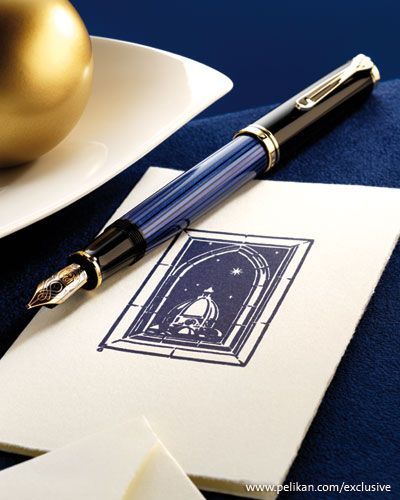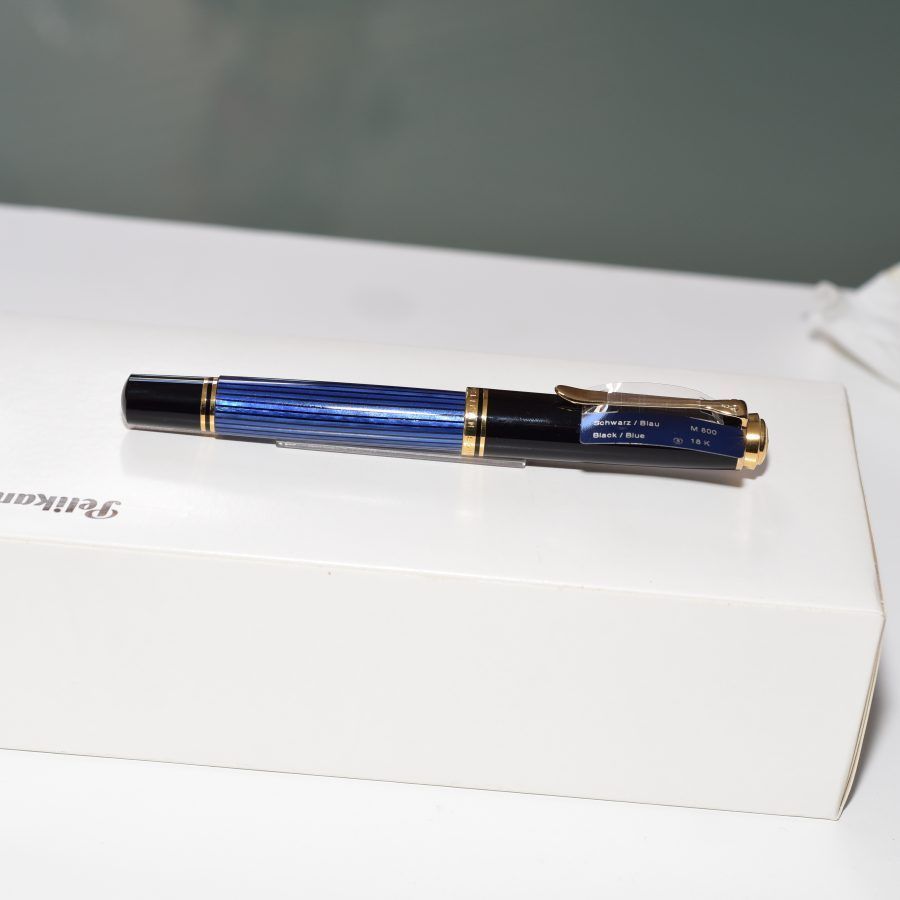Pelikan Maki-e “Dragón” 2023 fountain pen
5.000,00€
El “Dragón”, Each Souverän M1000 fountain pen is produced in Germany and then decorated in Japan. Every single pen has the Pelikan logo on the crown, a limited-edition number, and the artist’s signature drawn in by hand using Maki-e techniques. The “Dragon”, released in the year 2023 is available in a limited edition of only 123 pieces world-wide. Each fountain pen is equipped with a finely chased 18 carat, two-tone gold nib and is encased in a traditional Japanese pen box of paulownia wood.
Out of stock
Description
Views: 43
Maki-e ”Dragon“
Maki-e is a complex art of Japanese lacquer painting and is renowned for its beauty and artistry. Maki-e is often combined with other techniques, such as the Japanese Raden technique. In the process of Maki-e, the rare Japanese lacquer Urushi is applied to the fountain pen in a multitude of layers which are polished repeatedly.
The design is drawn with colored lacquer onto the surface. This technique is called Togidashi-Maki-e.
In addition, the artist can mix charcoal powder and gold powder into the lacquer, so that the pattern of the design is raised above the surface: If your thumb glides over the painting, you will feel the difference. This is called Taka-Maki-e technique. Pelikan fountain pen “Dragon” uses Togidashi-Taka-Maki-e technique that combines Togidashi-Maki-e and Taka-Maki-e.
The dragon is a very significant legendary spiritual mythical creature in Chinese mythology, appearing in myths, ornaments, works of art, and architecture of East Asia. The dragon is a powerful symbol and considered to be the source of all the power and is often used as a symbol of Chinese emperors. Dragon summons thunderclouds and storms, becomes a tornado, and rises into the sky and flies freely. It lurks in the abyss in autumn and rises to the heavens in spring.
The ascending dragon heading towards the heavens and the descending dragon from the heavens are favored as auspicious patterns. In particular, since it is said the dragon ascends to the heavens and gets the treasure ball, the descending dragon is depicted holding the treasure ball. It is said that the treasure ball is a sacred jade that can cure diseases, avoid disasters, and make all kinds of wishes come true. On the fountain pen the treasure ball was crafted with Raden technique, using small particles of abalone shell.
The dragon is surrounded by the golden lights of the thunder- storm and in the background is the Mount Fuji shown where the thunderstorm began.
Pelikan Maki-e “Dragon“ fountain pen is a masterpiece that combines the craftsmanship of Pelikan Germany based on 185 years of tradition and technology, coupled with superior Japanese traditional Maki-e painting techniques.


 Español
Español 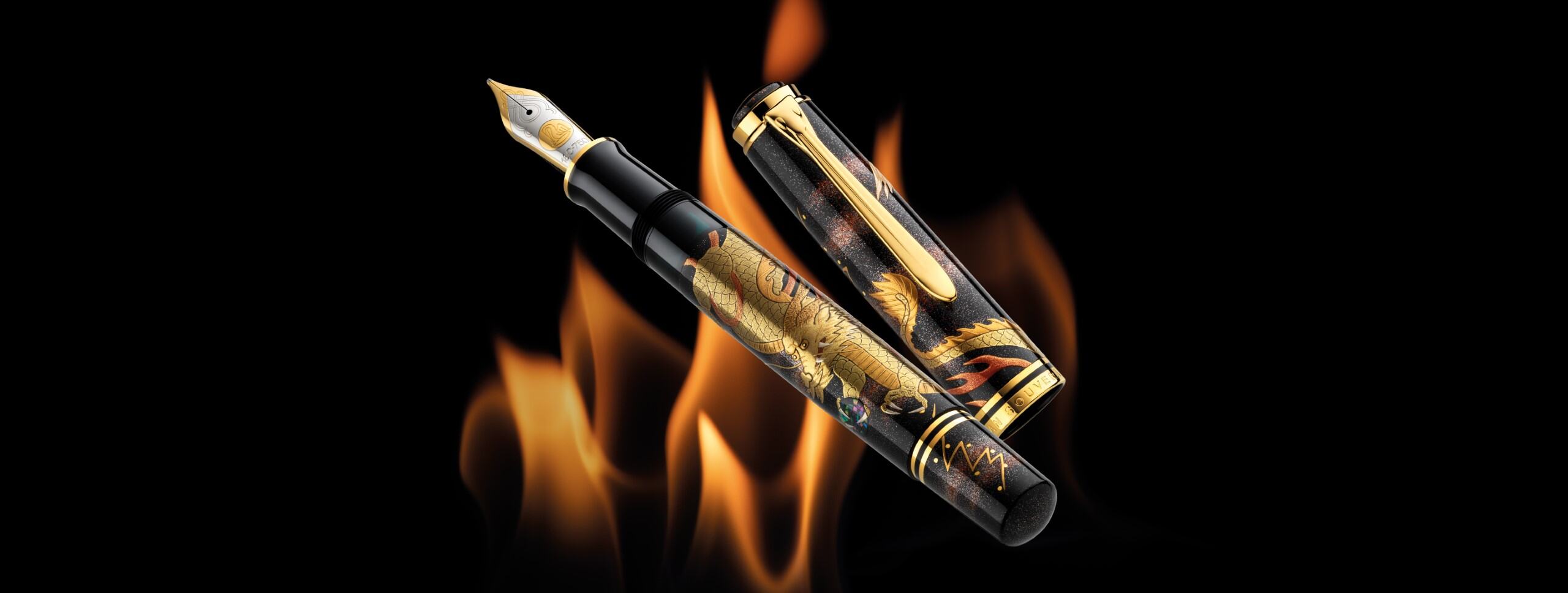
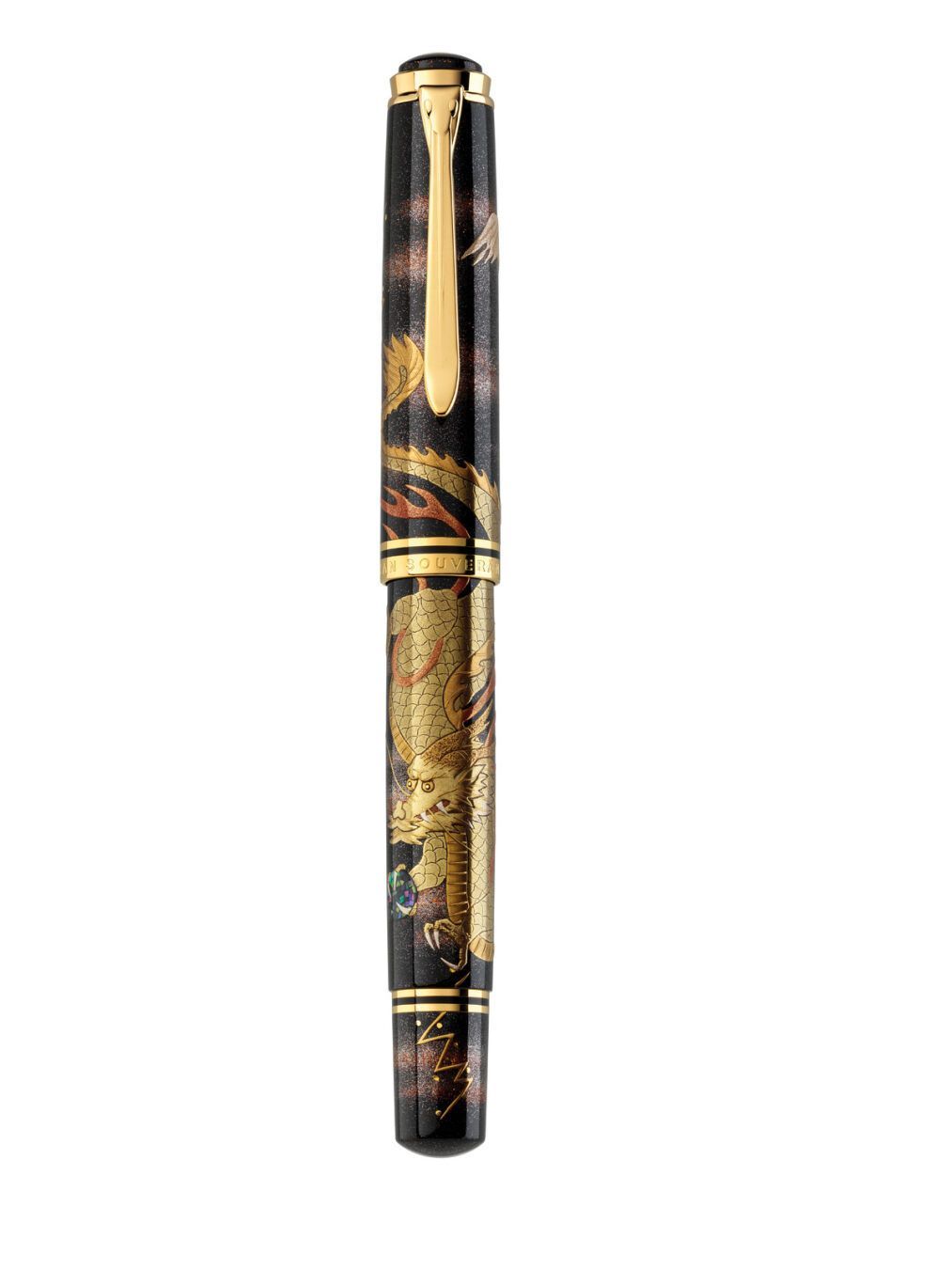
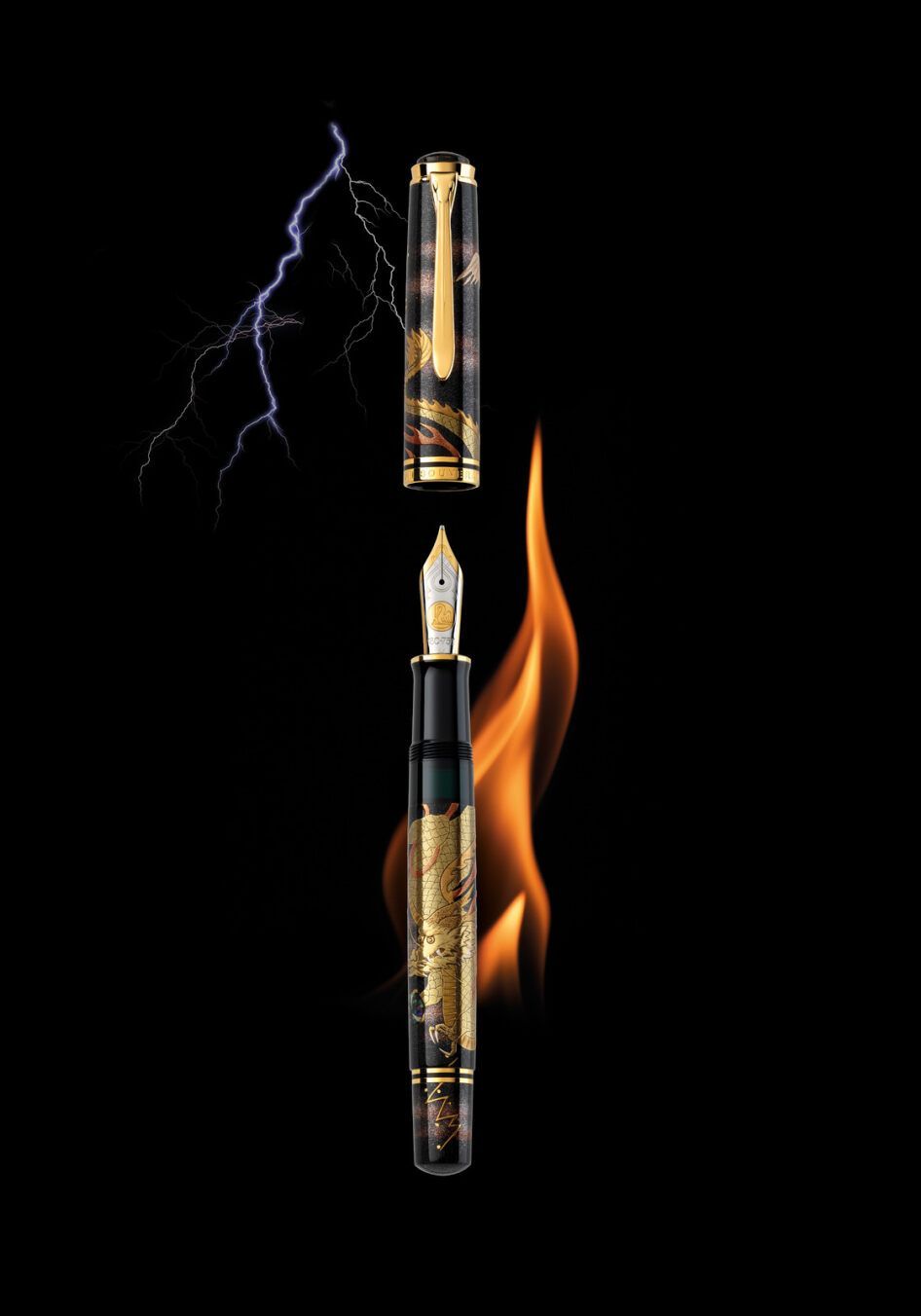
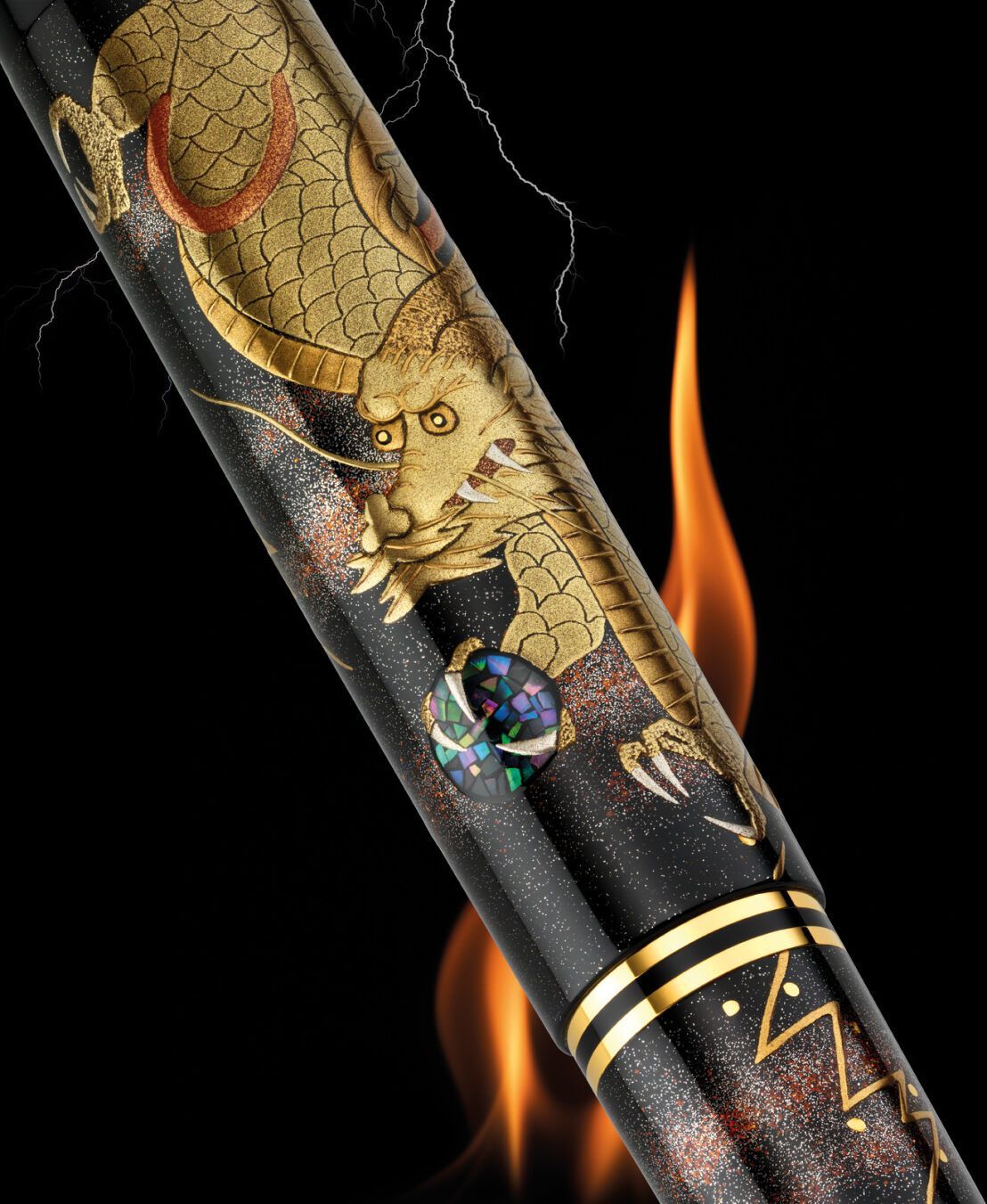
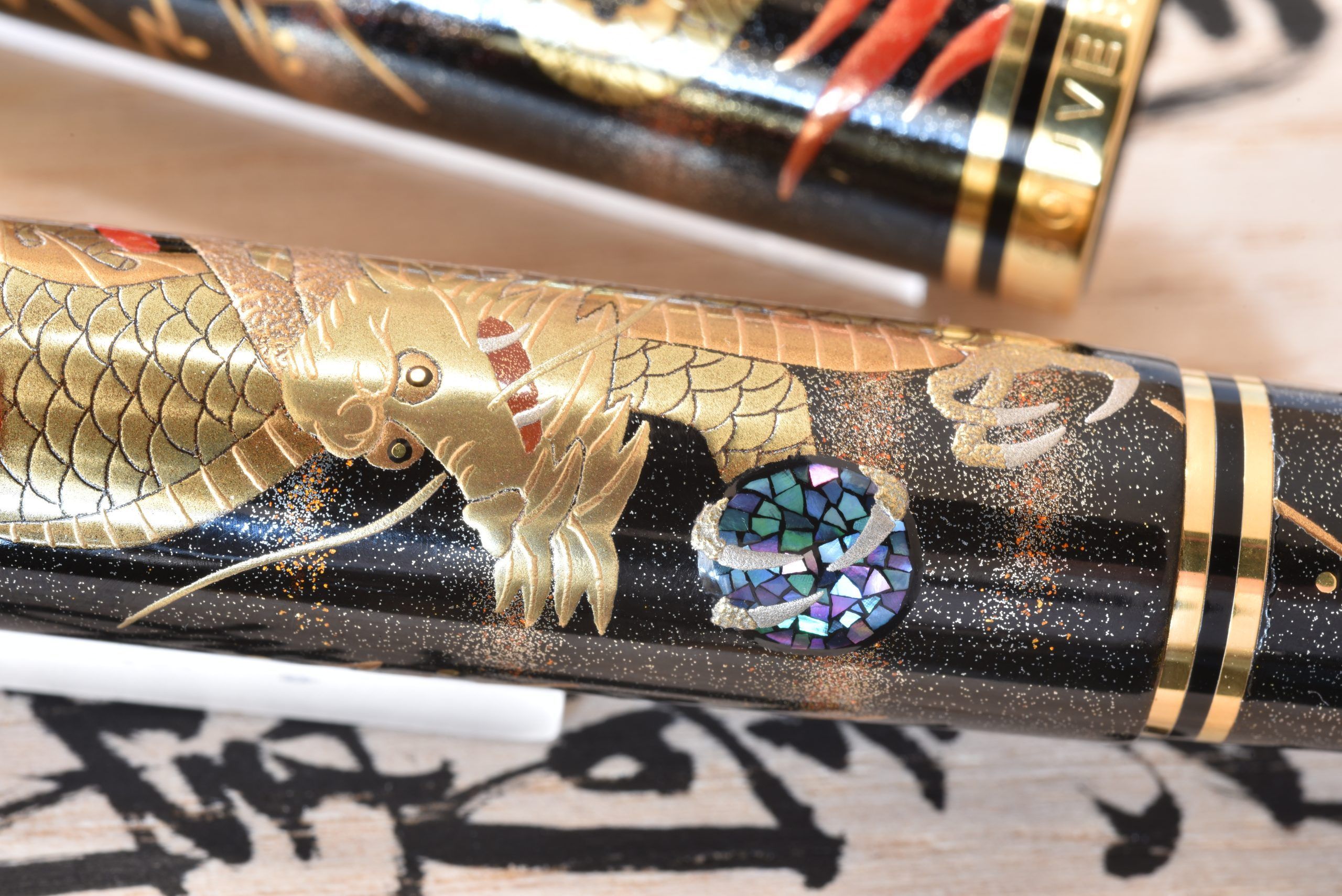
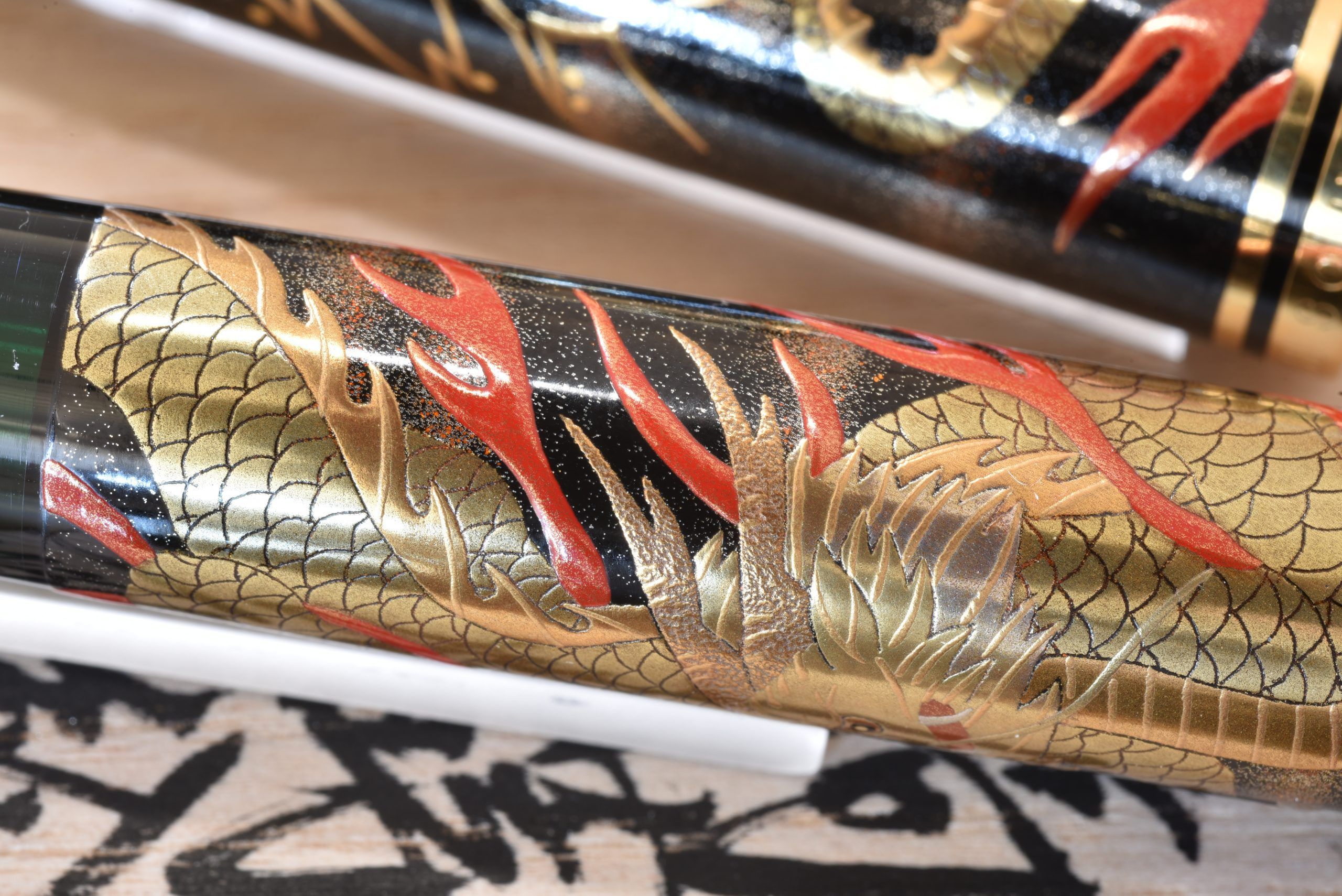
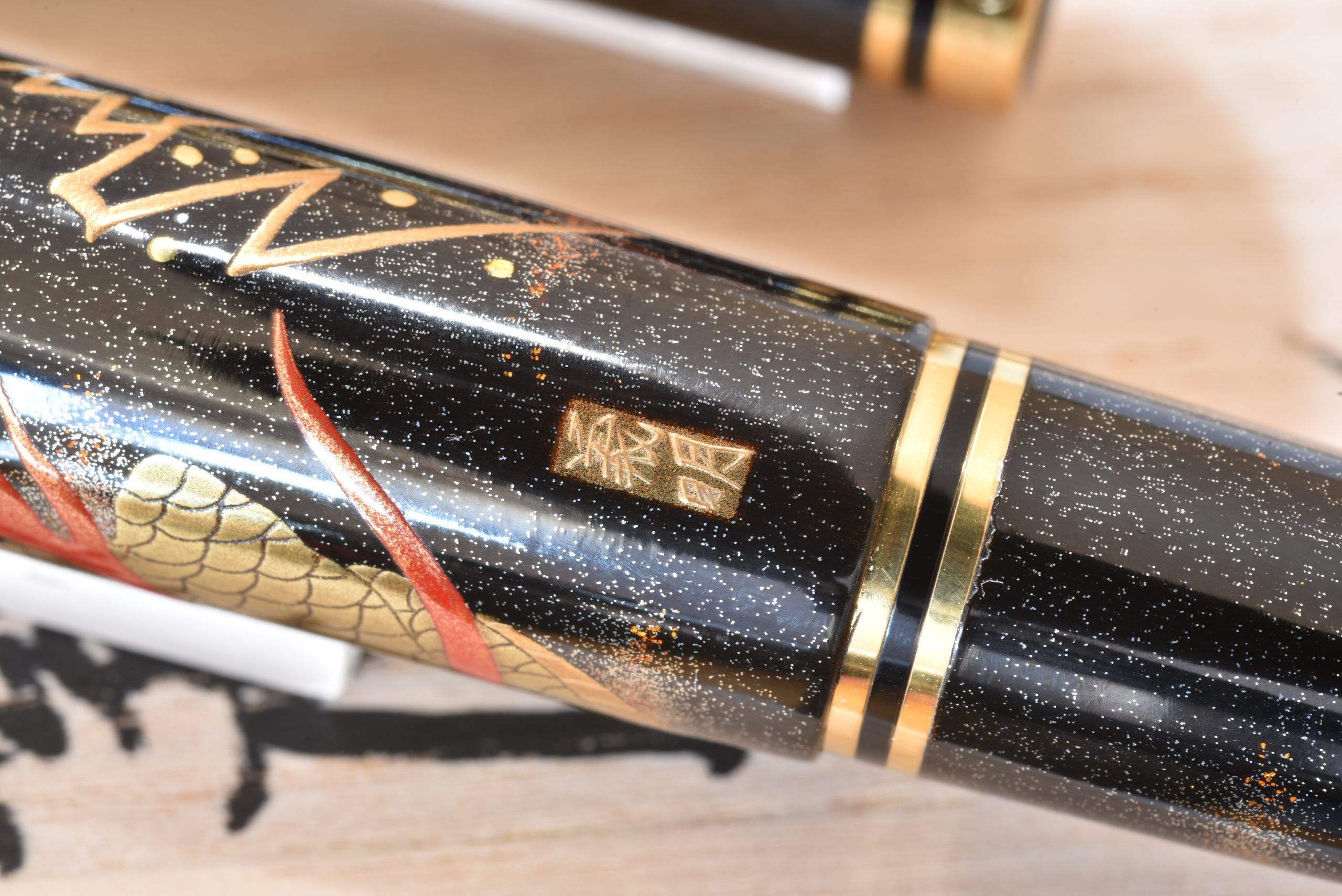
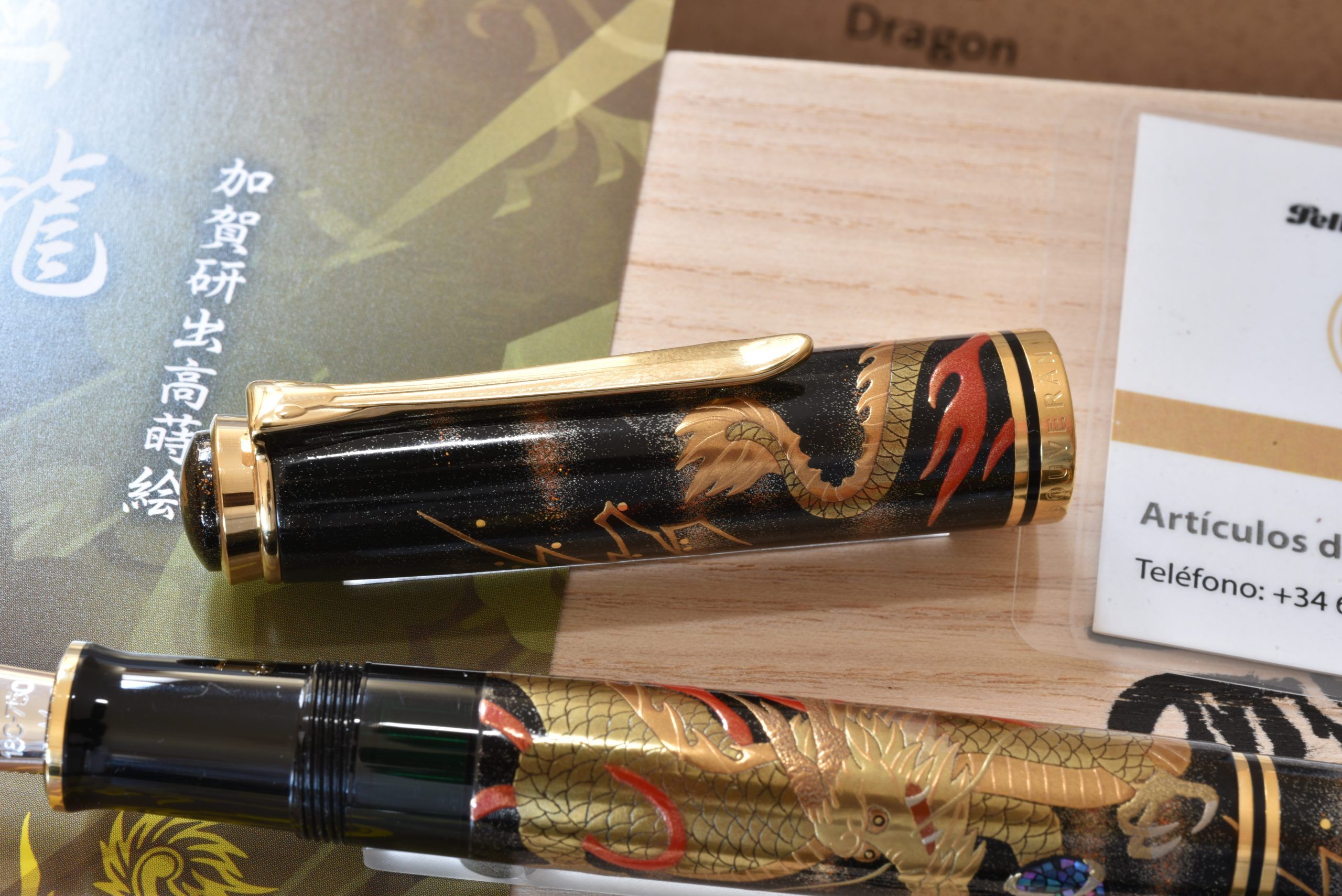
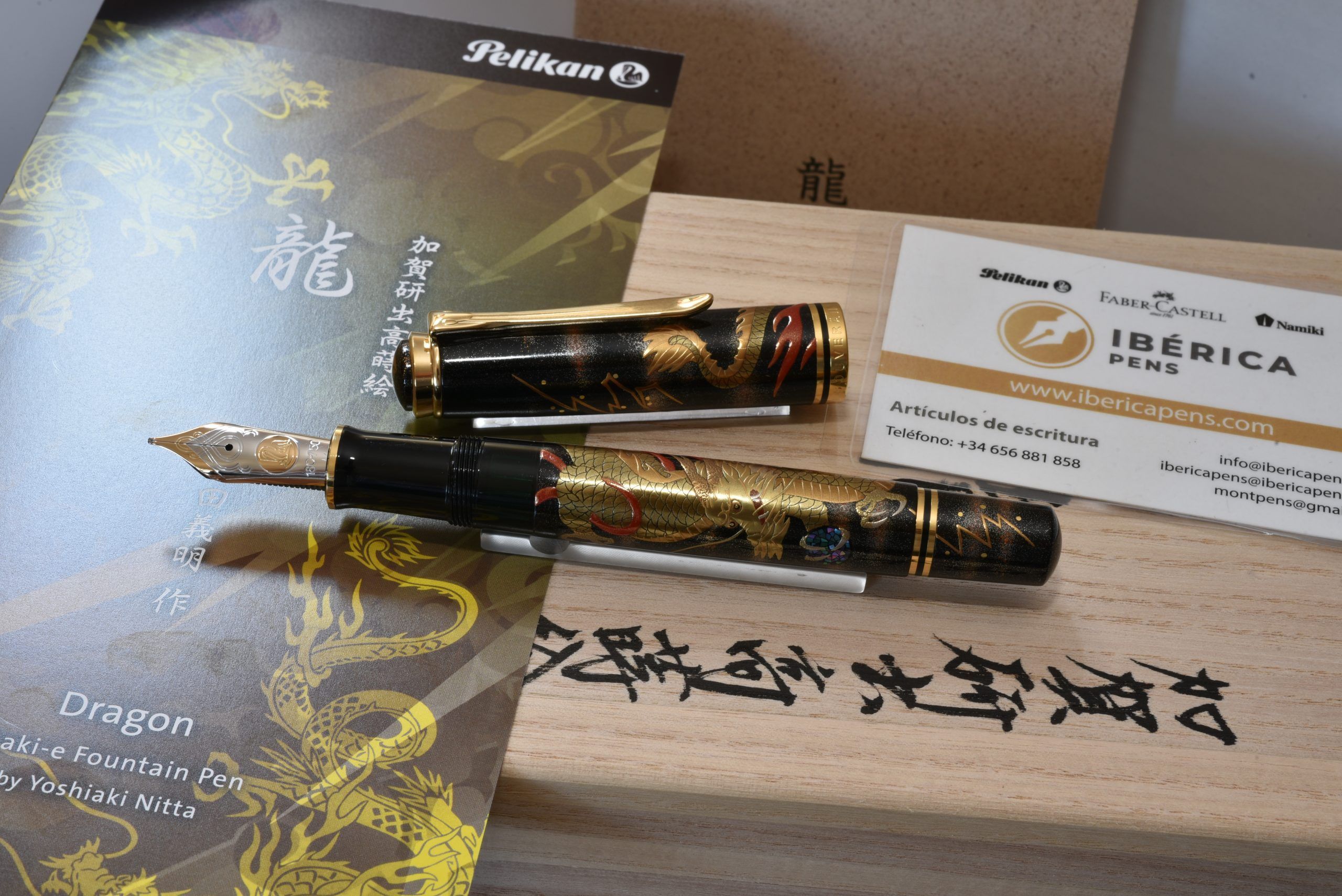
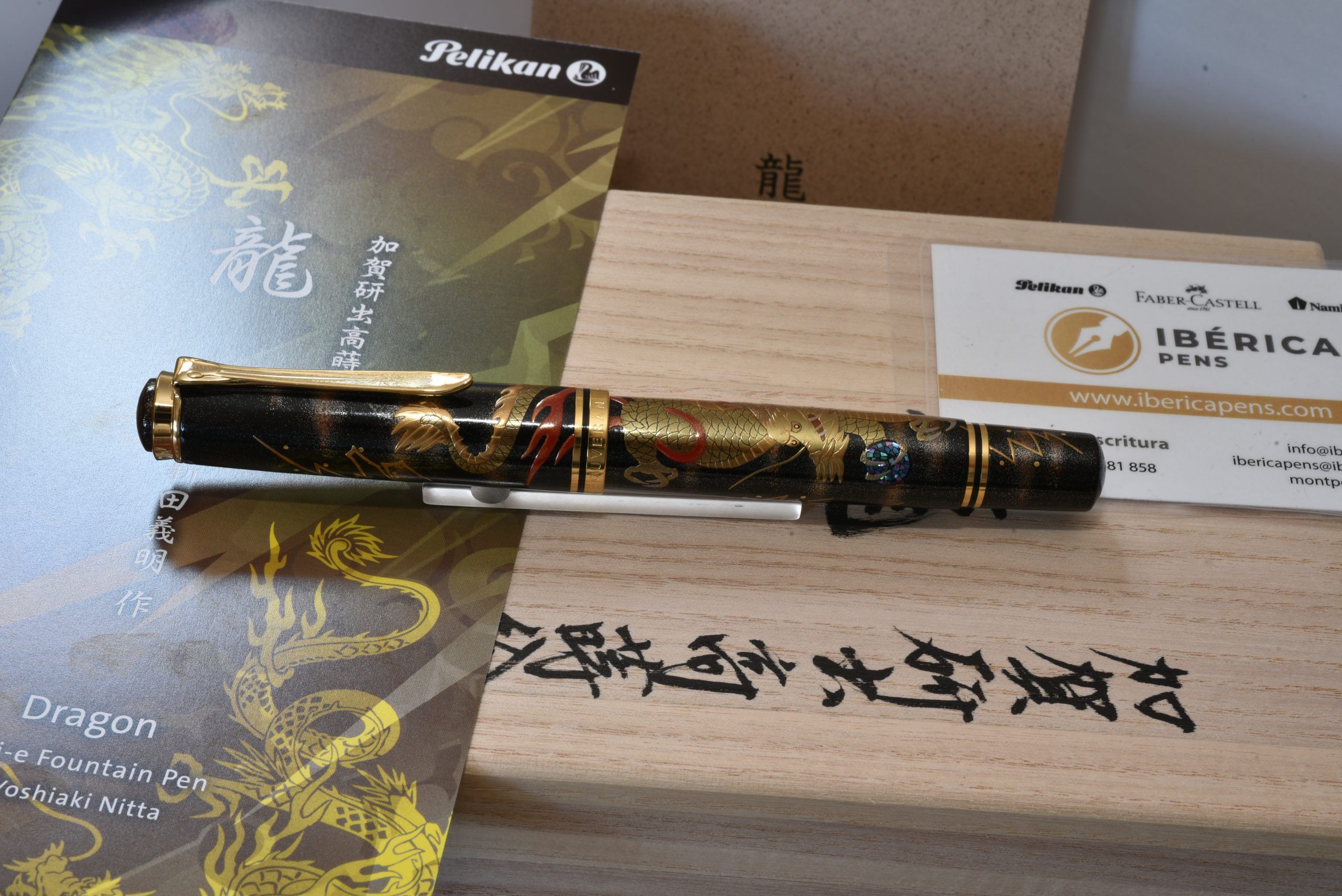
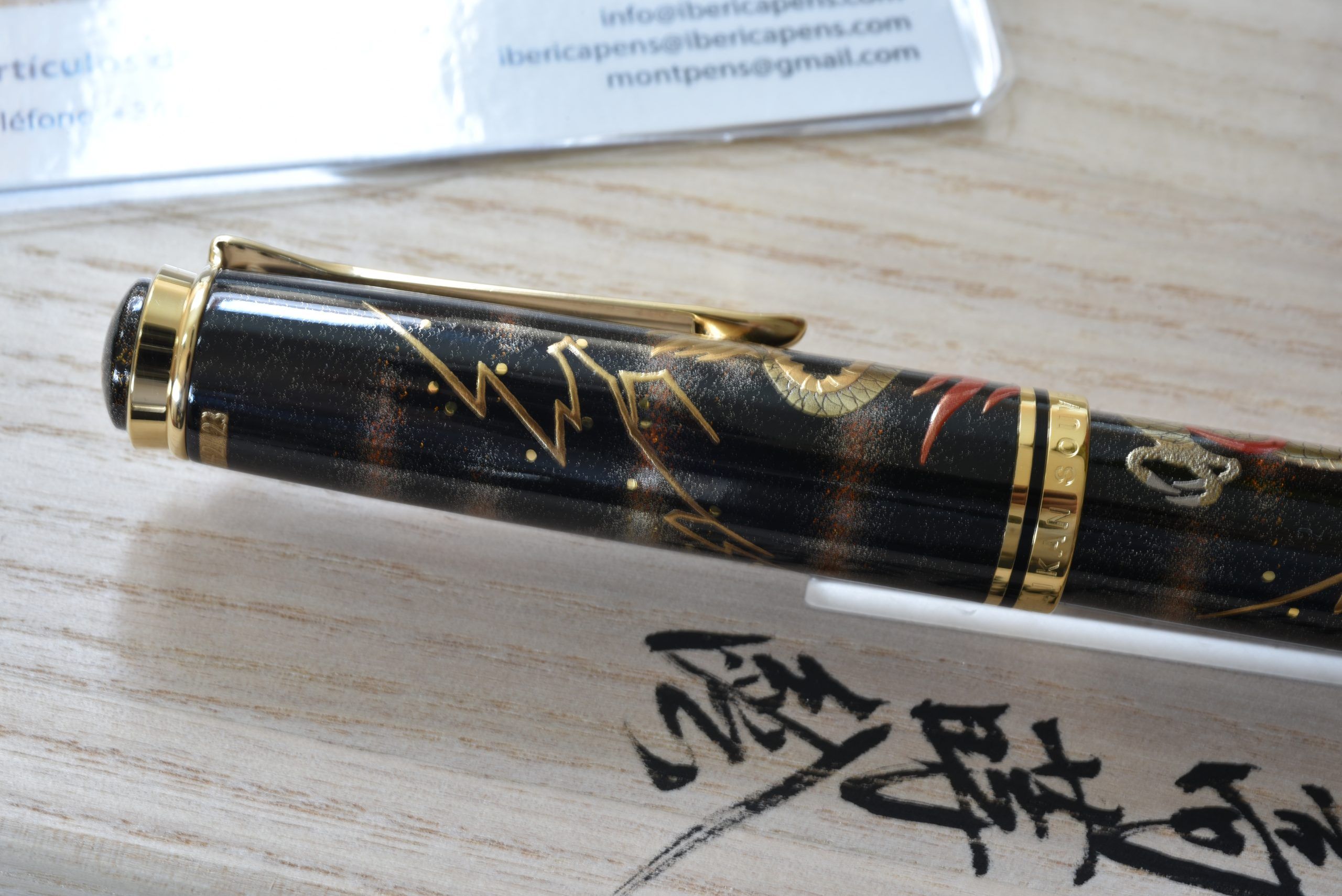
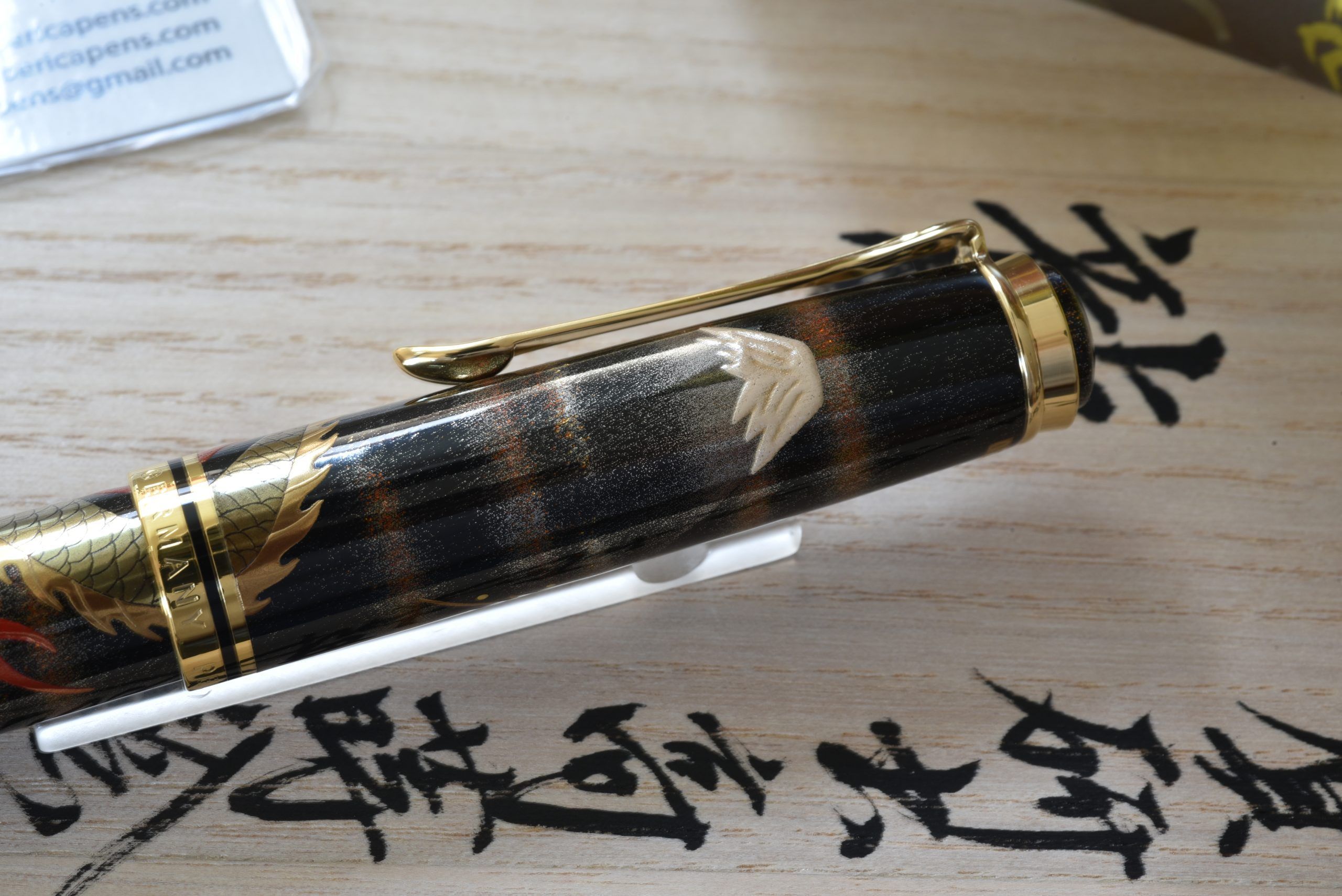
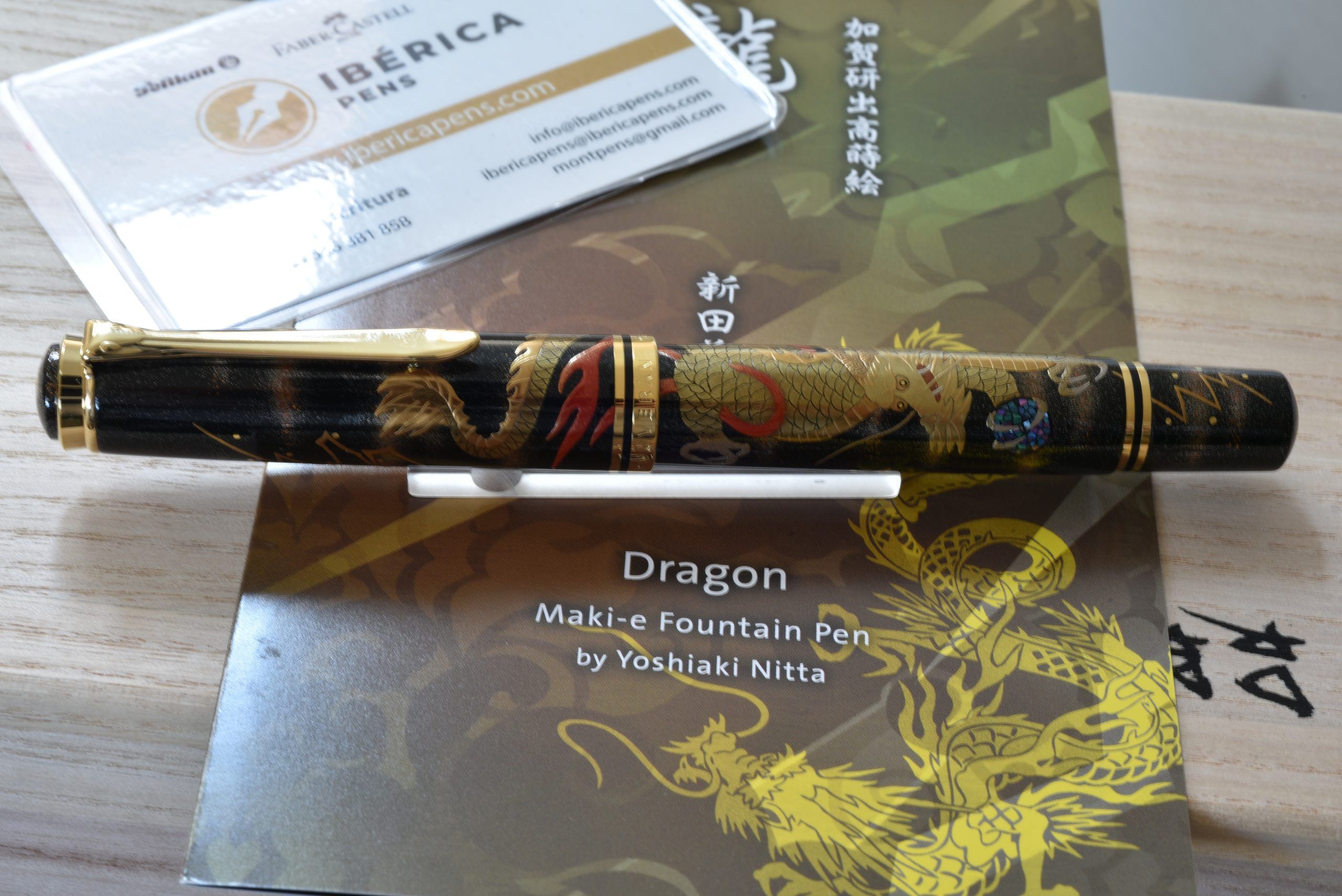
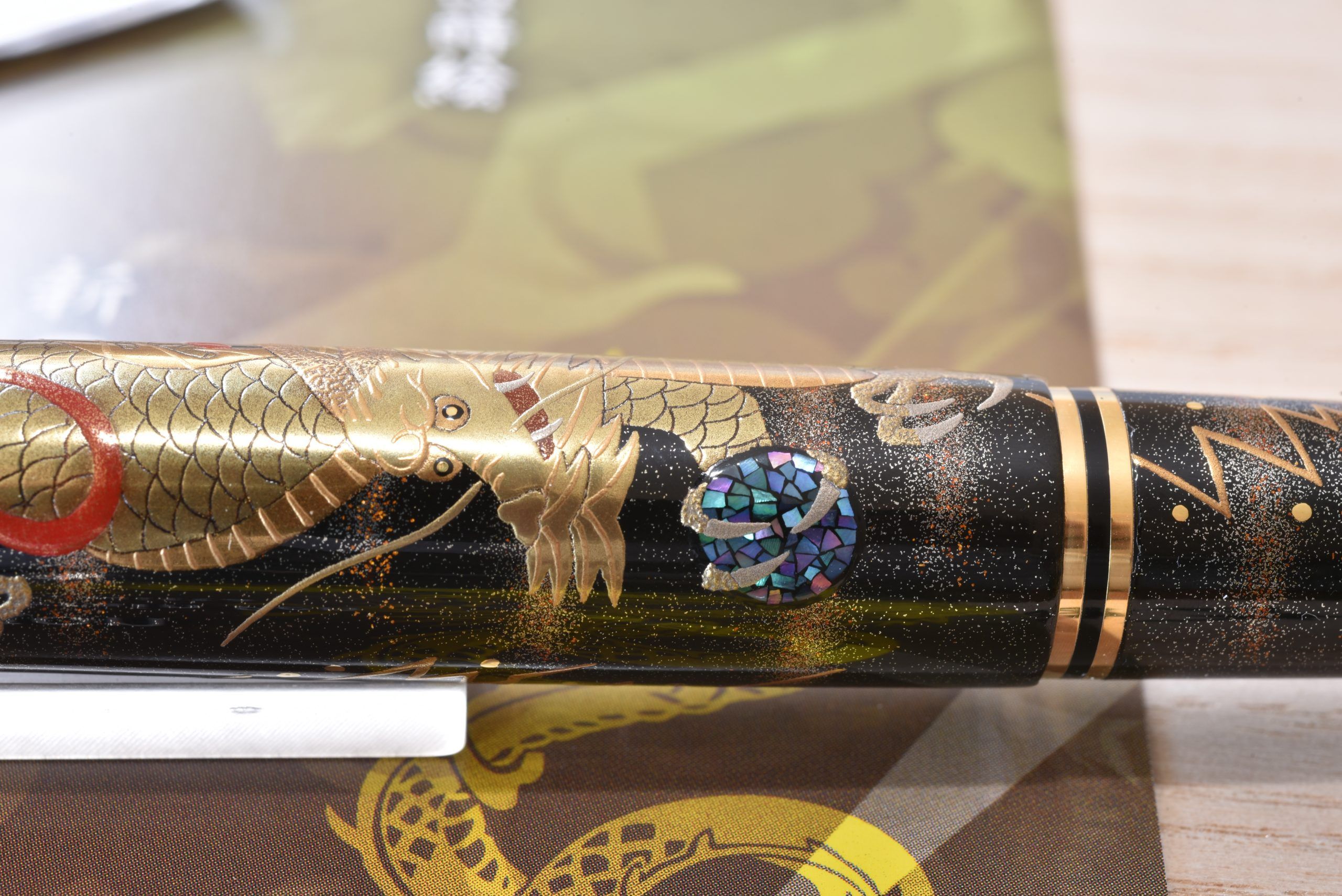
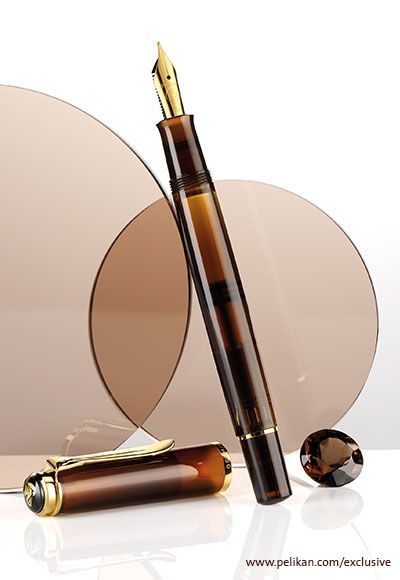
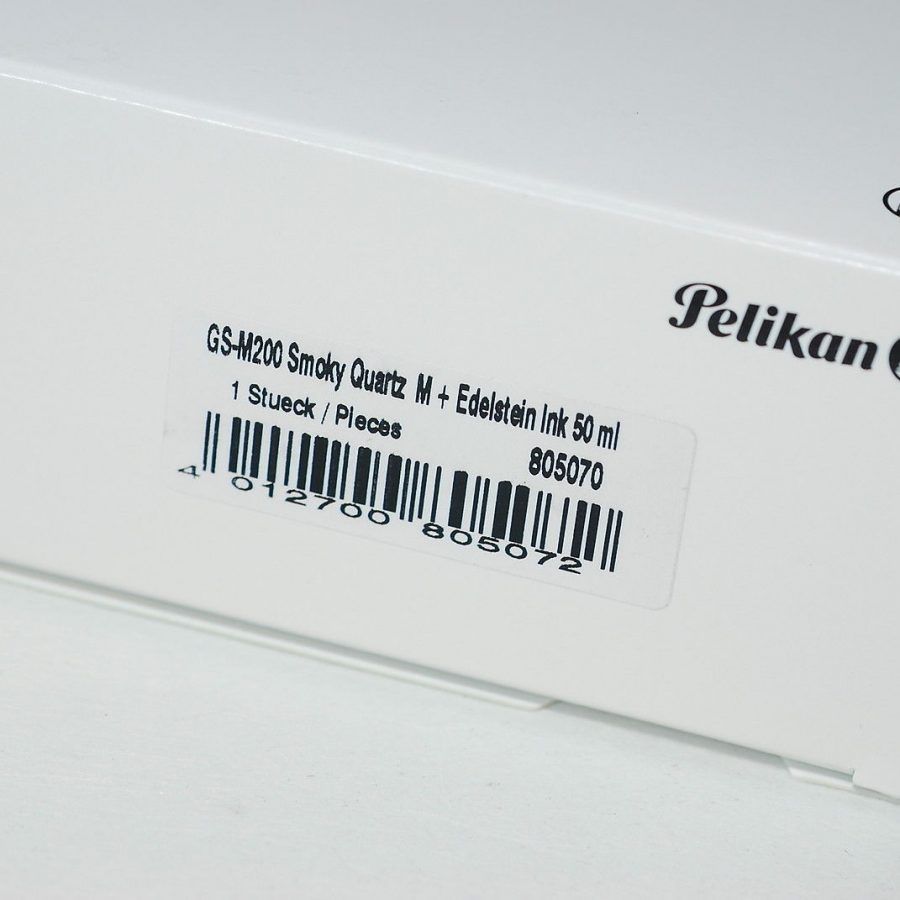
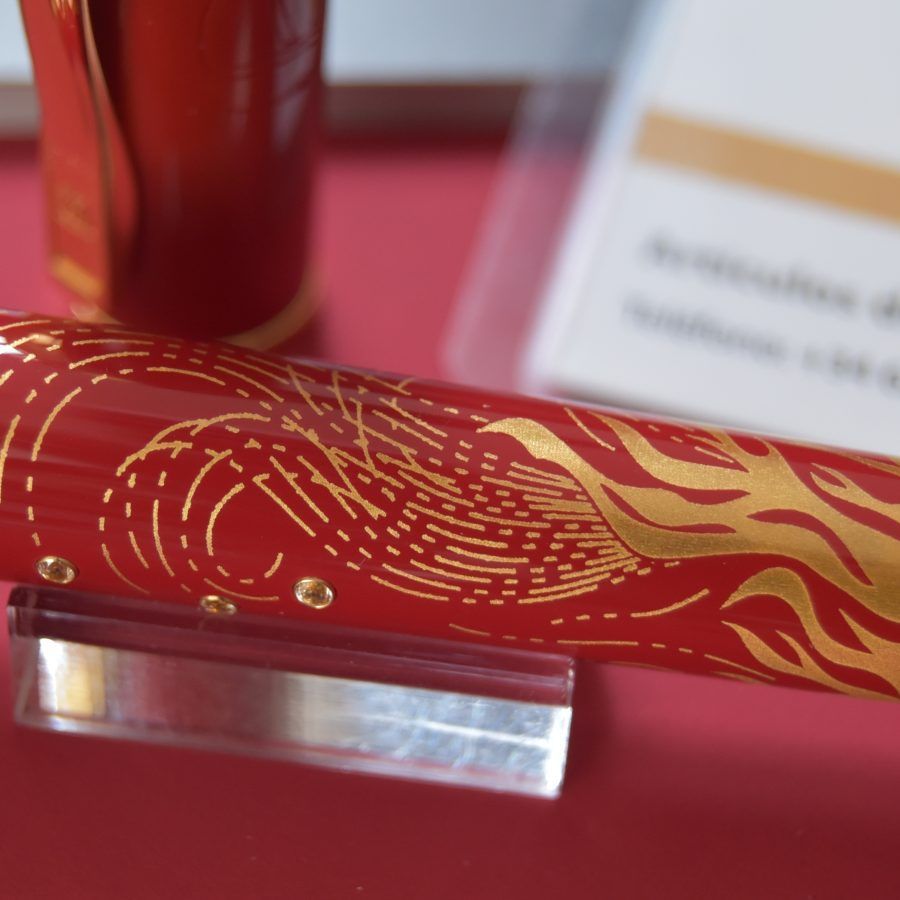
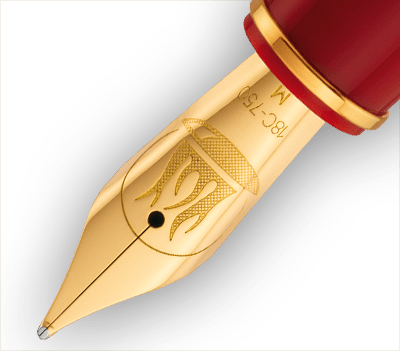 Fire
Fire